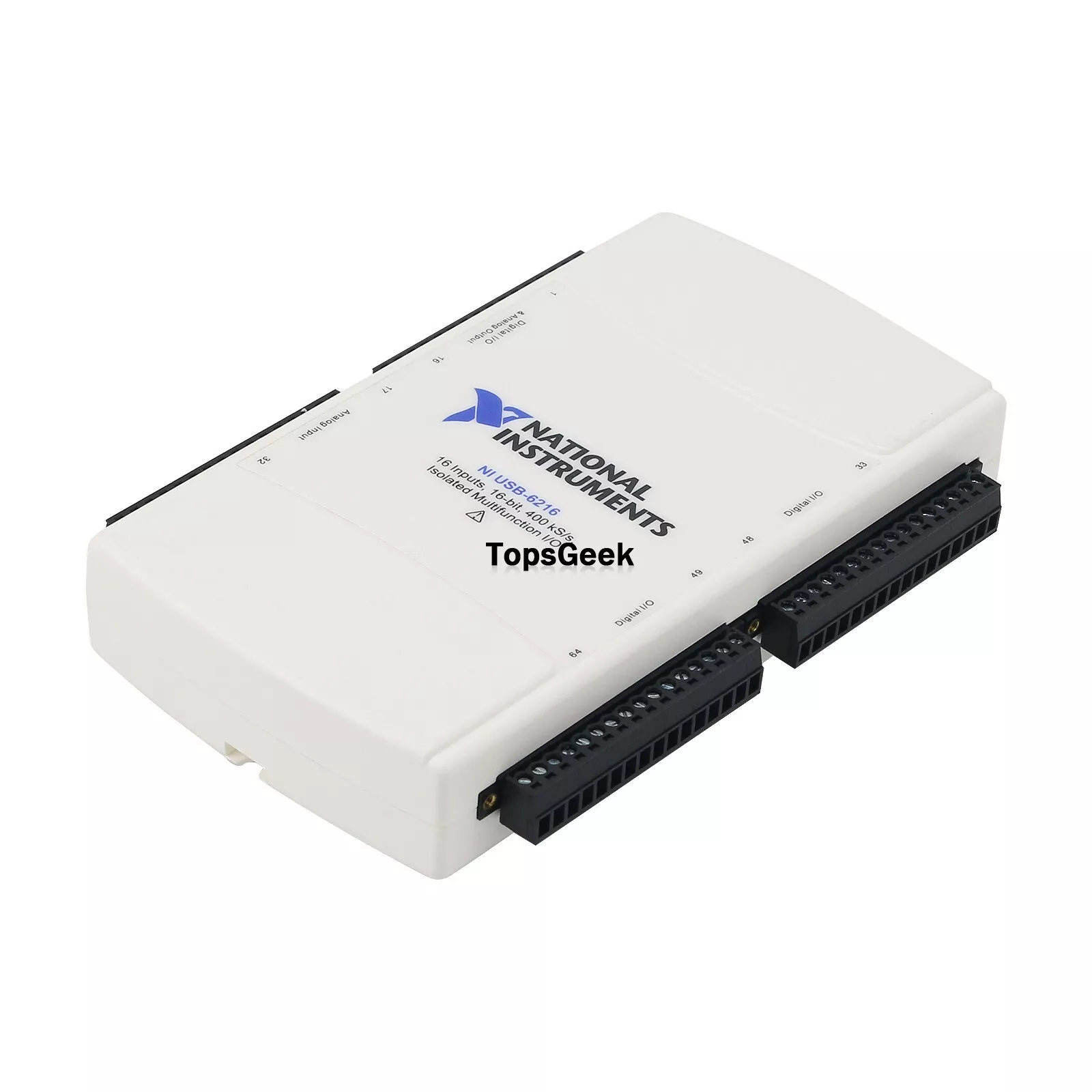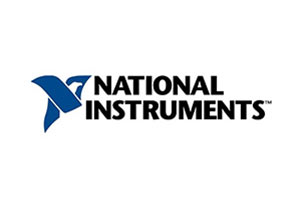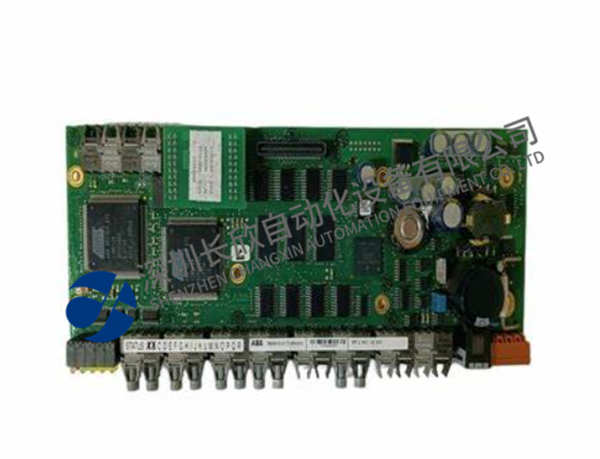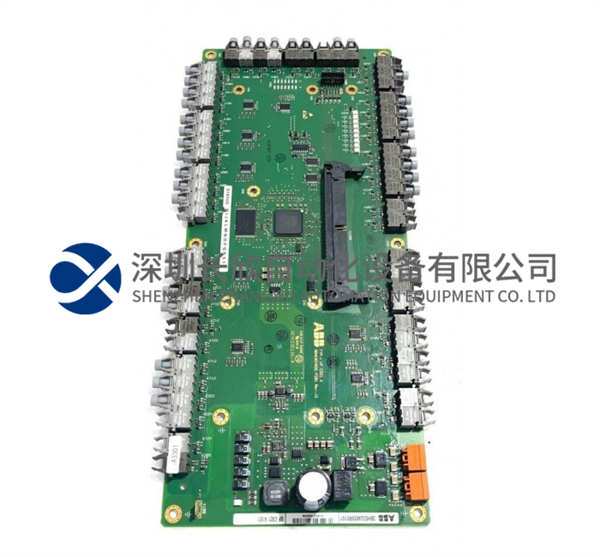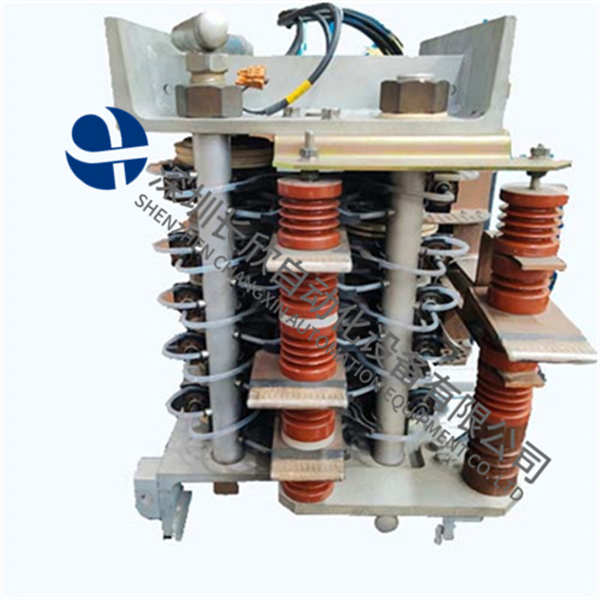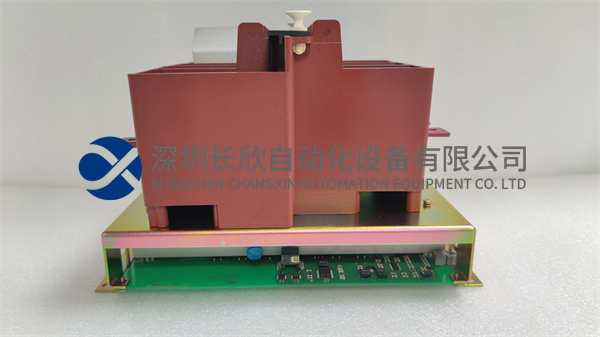描述
一、基本参数
接口类型:USB 2.0,支持即插即用,无需外部电源(总线供电)。
通道数:
模拟输入(AI):16路单端或8路差分输入,16位分辨率。
模拟输出(AO):2路,16位分辨率,更新率833 kS/s。
数字I/O(DIO):24条,双向,可配置为输入或输出,支持3.3 V或5 V电平。
计数器/定时器:2个32位计数器,支持编码器输入、脉冲生成等功能。
采样率:
模拟输入最高400 kS/s(单通道),多通道同步采样时速率会降低。
模拟输出更新率833 kS/s。
输入范围:
模拟输入支持±10 V、±5 V、±1 V、±0.5 V等可编程范围。
模拟输出范围±10 V。
同步功能:
支持多设备同步(通过RTSI总线或PFI信号)。
可与其他NI设备(如PXI模块)实现时间同步。
二、核心特性
高精度与低噪声:
16位分辨率确保高精度测量,适用于电压、电流、温度等信号采集。
低噪声设计(如±0.5 LSB RMS噪声)提升信号质量。
灵活的配置:
支持单端/差分输入切换,适应不同传感器连接方式。
数字I/O可配置为漏极开路或推挽输出,兼容多种逻辑电平。
实时性支持:
通过NI-DAQmx驱动实现低延迟数据传输,适用于实时控制场景。
支持硬件触发(如外部信号触发采样或输出)。
软件兼容性:
兼容NI LabVIEW、NI TestStand、C/C++、Python等开发环境。
提供丰富的API和示例代码,加速开发流程。
三、典型应用场景
工业自动化:
传感器信号采集(如温度、压力、振动)。
设备状态监测与故障诊断。
科研与教育:
物理实验、生物医学信号采集(如EEG、ECG)。
控制系统原型开发。
测试与测量:
音频信号分析、频谱测试。
自动化测试设备(ATE)中的数据采集与控制。
四、优势与局限性
优势:
便携性:USB接口设计,无需额外机箱或电源,适合移动测试。
性价比:相比PXI设备,成本更低,适合预算有限的项目。
易用性:NI-DAQmx驱动提供直观的配置界面,简化开发流程。
局限性:
采样率低于高端PXI设备(如USB-6361的2 MS/s)。
通道数较少,大规模多通道系统需多设备扩展。
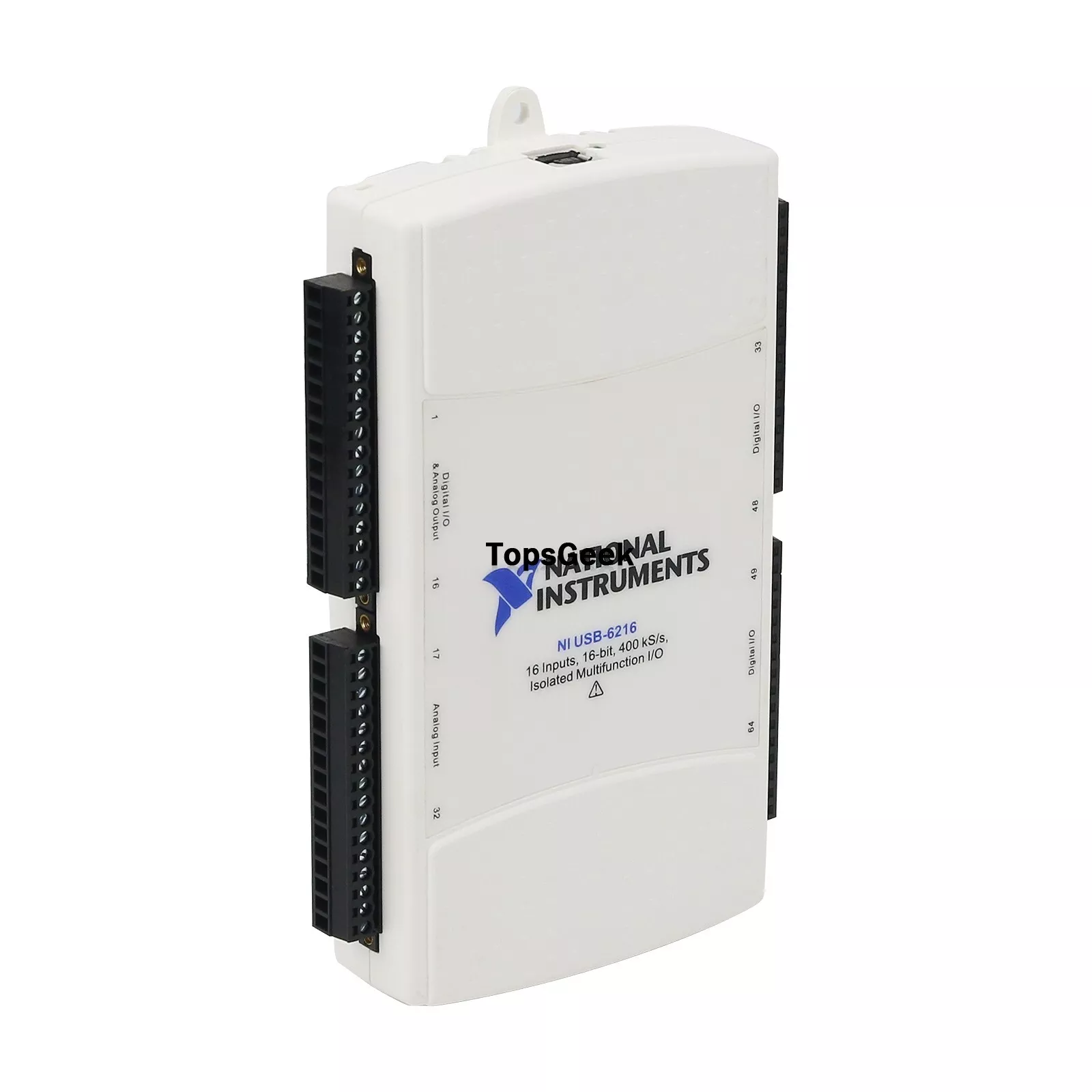
1.Basic parameters
Interface type:USB 2.0,supports plug-and-play,no external power supply(bus power)required.
Number of channels:
Analog input(AI):16 single-ended or 8 differential inputs,16-bit resolution.
Analog output(AO):2 channels,16-bit resolution,update rate 833 kS/s.
Digital I/O(DIO):24,bidirectional,configurable as input or output,supports 3.3 V or 5 V level.
Counter/timer:2 32-bit counters,supports encoder input,pulse generation and other functions.
Sampling rate:
The analog input is up to 400 kS/s(single channel),and the rate will be reduced when multi-channel synchronous sampling.
Analog output update rate 833 kS/s.
Input range:
Analog input supports programmable ranges such as±10 V,±5 V,±1 V,±0.5 V,etc.
Analog output range±10 V.
Synchronization function:
Supports multi-device synchronization(via RTSI bus or PFI signal).
Time synchronization can be achieved with other NI devices(such as PXI modules).
2.Core features
High precision and low noise:
16-bit resolution ensures high-precision measurement,suitable for voltage,current,temperature and other signal acquisition.
Low noise design(such as±0.5 LSB RMS noise)improves signal quality.
Flexible configuration:
Supports single-ended/differential input switching to adapt to different sensor connection methods.
Digital I/O can be configured as open-drain or push-pull output,compatible with a variety of logic levels.
Real-time support:
Low-latency data transmission is achieved through the NI-DAQmx driver,suitable for real-time control scenarios.
Supports hardware triggering(such as external signal triggering sampling or output).
Software compatibility:
Compatible with development environments such as NI LabVIEW,NI TestStand,C/C++,Python,etc.
Provides rich APIs and sample codes to accelerate the development process.
3.Typical application scenarios
Industrial automation:
Sensor signal acquisition(such as temperature,pressure,vibration).
Equipment status monitoring and fault diagnosis.
Research and education:
Physical experiments,biomedical signal acquisition(such as EEG,ECG).
Control system prototype development.
Test and measurement:
Audio signal analysis,spectrum testing.
Data acquisition and control in automated test equipment(ATE).
4.Advantages and limitations
Advantages:
Portability:USB interface design,no additional chassis or power supply required,suitable for mobile testing.
Cost-effectiveness:Compared with PXI devices,it is lower in cost and suitable for projects with limited budgets.
Ease of use:The NI-DAQmx driver provides an intuitive configuration interface to simplify the development process.
Limitations:
The sampling rate is lower than that of high-end PXI devices(such as 2 MS/s of USB-6361).
The number of channels is small,and large-scale multi-channel systems require multi-device expansion.

